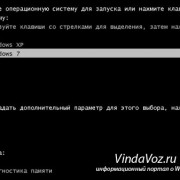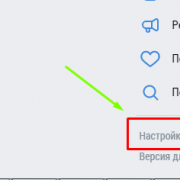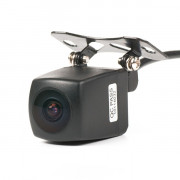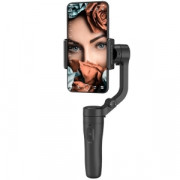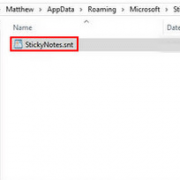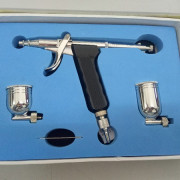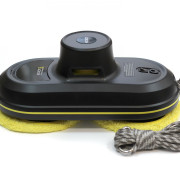Diskdigger pro
Содержание:
- News for July 2019
- News for March 2019
- Типы файлов, поддерживаемые DiskDigger
- Part 1: DiskDigger Video Recovery for Android at A Glance
- News for January 2021
- Описание приложения
- Common Features
- Как работает программа?
- More news for November 2018
- Saving by FTP uploading
- News for December 2018
- Saving locally
- Ключевые особенности
- Особенности приложения
- News for August 2020
- Dig Deeper
- Lost your files? Don’t panic! Dig them up with DiskDigger.
- DiskDigger for Android FAQ
- Starting the App
News for July 2019
Tue, 07/16/2019 — 21:08 — Dmitry Brant
The latest update to DiskDigger for Windows improves upon its general performance, as well as these specific enhancements:
- Improved handling of compressed files in NTFS filesystems. When your disk is formatted with NTFS, individual files can be compressed (using a variation of LZ77) to conserve disk space. When scanning in «Dig Deep» mode, DiskDigger automatically and transparently decompresses these files, so that they can be recovered in their original state.
- Improved handling of system-compressed files in NTFS. Windows 10, as part of its background operation, searches for certain files that are seldom used and automatically compresses them. This is different from the «standard» compression that can be applied to NTFS files. This compression is done by creating an alternate data stream (with a reparse point) called «WofCompressedData» and filling it with the compressed data, which is compressed with the Xpress or LZX algorithms. DiskDigger handles all of these cases, and automatically recovers these types of files in uncompressed form.
- Added support for recovering Quicken data files (.QDF) in «Dig Deeper» mode.
- Improved efficiency of recovering executable (EXE and DLL) files.
- Fixed some possible stability issues when previewing WAV audio files.
In other news, DiskDigger for Android also received an update, with improvements to its «Wipe free space» function, which is now faster and more effective than before.
Download DiskDigger for Windows to recover deleted files from any media readable by your PC! And for recovering data from your Android device, find the DiskDigger app on the Google Play Store!
News for March 2019
Sat, 03/09/2019 — 15:02 — Dmitry Brant
I’m happy to announce some exciting new features in DiskDigger for Windows, as well as in DiskDigger for Android!
Let’s go over the Windows version first:
- «Dig Deep» mode has been enhanced with an option to show either «Deleted files only» (which was the previous default behavior) or «Deleted and existing files.» This is useful when the disk is improperly formatted or partitioned (or if the partition area is damaged), but the file system itself is still healthy. When you insert the disk and Windows shows an error such as «You need to format the disk before you can use it,» it’s an indication of this kind of issue. DiskDigger will now let you recover all the files from such a disk, whether or not they were actually deleted within the file system.
- In «Dig Deep» mode, there is now improved support for scanning certain file systems that are not native to Windows, including HFS+ (used in macOS disks) and ext4 (used in Linux).
- Enhanced support for scanning optical disks (CDs and DVDs) and the file systems that they contain, including ISO 9660 and UDF. There is also improved support for scanning damaged or improperly-burned disks: When selecting the drive to scan, you can go to the Advanced tab and check the «Detect disk size manually» box, which will make DiskDigger ignore the size of the disk as reported by the driver, and instead read the disk explicitly until it can no longer be read.
And here is what’s new in the Android version of DiskDigger:
- Support for recovering Opus audio files (when scanning rooted devices). The Opus format is used by WhatsApp for saving audio messages, which means that you can now recover WhatsApp voice notes. This format is also often used for ringtones and by other media recording apps.
- At last, you can now preview recoverable video and audio files, in place, without having to recover them first! (Previously only photos could be previewed.) Tap the «play» icon next to each recoverable file to show the preview dialog, then use the playback controls to play, pause, rewind, etc. (Note that this feature is only available on Android Marshmallow (6.0) and above.)
So what are you waiting for? Download DiskDigger for Windows for all your recovery needs on your PC, or find the DiskDigger app on the Google Play Store to recover files from your Android device.
Типы файлов, поддерживаемые DiskDigger
DiskDigger поддерживает множество типов файлов, поэтому вы, скорее всего, сможете найти и восстановить этот файл или те файлы, которые вам нужно восстановить.
Фотографии и изображения
- JPG / JPEG — изображения с цифровых или веб-камер
- PNG — Портативные сетевые графические изображения
- GIF — графический формат обмена изображениями
- BMP — растровые изображения
- TIFF — изображения с тегами формат файла изображения
- ICO — иконки Windows
- АНИ — анимированные курсоры Windows
- CR2 — Canon RAW
- SR2 — Sony RAW
- NEF — RAW от Nikon
- DCR — Kodak RAW
- PEF — Pentax RAW
- RAF — Fujifilm RAW
- RW2 — Panasonic RAW
- LFP — Lytro RAW
- MPO — 3D изображения с камеры
- DNG — Adobe Digital Негативные изображения
- SVG — масштабируемые файлы векторной графики
- HEIC / HEIF — файлы
- PSD — изображение Adobe Photoshop
- РАН — Солнечные растровые изображения
- PSP — Corel Paint Shop Pro изображения
- Thumbcache — образы кэша Windows
- IFF — Amiga изображения
- ART — AOL изображения
- WMF — метафайлы Windows
- EMF — расширенные файлы MetaFile
- WMZ / EMZ — сжатые файлы MetaFile
- DICOM — медицинские документы
- WEBP — изображения WebP
- PCX — изображения ZSoft PCX
- CDR — файлы CorelDraw
- INDD — файлы Adobe InDesign
- CP — Adobe Captivate файлы
- AI — файлы Adobe Illustrator
Документы и файлы
- DOC — файлы Microsoft Word до 2003 года
- DOCX — файлы Microsoft Word 2007 или более поздней версии
- XLS — привет расчет Microsoft Excel до 2003 года
- XLSX — электронная таблица Microsoft Excel 2007 или более поздняя версия
- PPT — презентации Microsoft PowerPoint до 2003 года
- PPTX — Microsoft PowerPoint Presentations 2007 или более поздняя версия
- VSD — документы Microsoft Visio
- PDF — файлы формата Portable Document Format
- XML — файлы расширяемого языка разметки
- HTML — файлы языка разметки гипертекста
- RTF — файлы форматированного текста
- WPD — документы WordPerfect
- WPS — документы Microsoft Works
- PUB — документы Microsoft Publisher
- XPS — XML Paper Specification документы
- WRI — Старые окна для записи документов
- ODT, ODS, ODP, ODG — файлы формата OpenDocument
- DPP — Serif DrawPlus документы
- PPP — Serif PagePlus документы
Аудио и видео
- MP3 — очень распространенный аудиофайл MPEG layer 3
- WMA — Windows Media Audio
- AVI — аудио-видео чередование
- WAV — Волновое аудио
- MID-музыкальный инструмент цифровой интерфейс
- FLV — Adobe Flash Video
- WMV — Windows Media Video
- MOV — QuickTime видео
- M4A — MPEG-4 аудио
- M4V, MP4 — MPEG-4 видео
- 3GP — видео партнерства третьего поколения
- F4V — Adobe Flash видео на основе MPEG-4 часть 12
- RM — RealMedia видео
- RMVB — видео RealMedia (с переменным битрейтом)
- MKV — Матроска видео
- MPEG — группа экспертов по кинематографии
- AU — Sun Microsystems audio
- МТС, М2ТС — транспортный поток MPEG2
- R3D — красная видеокамера
- APE — Обезьяна Аудио Аудио
- OFR — OptimFROG аудио без потерь
- PPM, PGM, PBM — изображения Netpbm
- WEBM — видео WebM
Сжатые файлы
- ZIP — широко используемый формат сжатых файлов, разработанный PKWARE
- RAR — Архив Рошала, используемый WinRAR
- 7Z — сжатый 7-Zip файл
- GZ — сжатый формат GZIP
- SIT — StuffIt сжатый формат для Mac
- ACE — файл WinAce
- CAB — файл Microsoft Cabinet
- SZDD — сжатые файлы, созданные MS-DOS COMPRESS.EXE
Другие типы файлов
- ISO — образы оптических носителей, такие как CD и DVD
- EXE — исполняемый файл Windows
- DLL — динамическая библиотека Windows
- MDB — база данных Microsoft Access до 2003 года
- ACCDB — база данных Microsoft Access 2007 или более поздняя версия
- PST — личные папки Microsoft Outlook
- DBX — файл данных Microsoft Outlook Express
- XAC — файл данных GnuCash
- KMY — файл данных KMyMoney
- DWG — чертеж AutoCAD
- DXF — формат обмена чертежами
- CHM — скомпилированный файл Microsoft HTML Help
- TTF, TTC — шрифт TrueType
- CLASS — файл классов Java
- KMZ — геолокационные данные из Google Earth
- FIT — файл активности Garmin
- WALLET — Оружейная биткойн кошелек
- WALLET.DAT — кошелек с биткойн-ядром
Part 1: DiskDigger Video Recovery for Android at A Glance
1.1 What Is DiskDigger for Android?
So, what is DiskDigger? In simple terms, it digs for content on your phone that has been deleted. Once you’ve retrieved your video files, you can upload them directly to cloud services like Google Drive and Dropbox. DiskDigger comes with a free and pro version. The free version is a limited version that is particularly used for photos only. If you’re seeking to retrieve your videos and other documents, you’re required to sign up for the pro version. Although your device does not need to be rooted when performing this recovery process, it is still recommended to root your phone because you’re more likely to restore your photos and videos more efficiently.
1.2 Is DiskDigger for Android Safe?
Don’t worry. Like most other recovery apps, DiskDigger is as safe as houses. The software does not seek any personal or sign-up information. And neither does it require you to input personal information. Simply download and use it.
1.3 I Know about DiskDigger –How to Use Diskdigger Video Recovery on An Android Phone?
This guide takes you through both types of scans and the features available to give you the best chance of recovering your media files. It’s quite simple. Follow these steps:
Note:
DiskDigger is compatible with any Android device, from Android 2.2 or higher.
• Step 1 – Search and download the DiskDigger Video Recovery from Play Store.
• Step 2 – Open the app when it has downloaded.
• Step 3 – Choose your scan option.
When you open the app, you’re presented with two scanning options: Dig Deep or Dig Deeper.
Dig Deep: simply requires you to open the app and click on «Start Basic Photo Scan» to begin the process.
Dig Deeper: requires rooting of your device for an efficient recovery process. You can recover files from your SD card and restore many data types from JPG, MP4, MP3, WAV, GIF, and more!

1.4 Pros&Cons for DiskDigger
When the scanning begins, sit back and let the app perform its retrieval magic! It’s quite a straightforward application to use, right? Let’s bring a multitude of features into a simple summary.
|
DiskDigger Basic |
DiskDigger Pro |
|---|---|
|
Recovers videos and photos recently deleted |
Recovers all kinds of files (photos, videos, documents) |
|
Root your device to recover videos |
Restore all file types when rooting |
|
Save to your local drives or cloud sharing accounts |
Save to local drive, cloud and FTP server |
|
Free |
Costs $14.99 |
Pros Recovery all kinds of lost or deleted data types(paid). Preview your files on the native interface and choose which files to recover. Very easy to use with a simply interface.
Cons Recovery rate isn’t very high. There is no customer support feature. Many users said that it only recovers the thumbnails that are very pixilated compared to the original picture while recovering the photos.
News for January 2021
Mon, 01/18/2021 — 00:29 — Dmitry Brant
It’s time for another important update to DiskDigger for Windows! Here is what’s new in the latest version:
- Improved accuracy and efficiency of detecting certain raw camera formats, including Nikon (NEF) and Canon (.CR2).
- Revamped and improved recovery of .MP3 audio files. Will now recover a wider range of .MP3 files from different sources and devices.
- Added support for recovering .AAC audio files.
- Added an advanced option to perform a more thorough search for .MP3 or .AAC audio. After selecting «Dig deeper» mode (when selecting the types of files to search for), go to the Advanced tab and select the «Extra deep MP3 search» option. This option is still experimental and is not selected by default, since it can produce false positives.
- Added another advanced option to start the scan from a specific sector on the disk. When selecting the types of files to scan, go to the Advanced tab and enter the custom sector number in the «Starting sector to search from» text box.
Download DiskDigger for Windows now to search any of your hard drives, USB drives, or memory cards for deleted files!
And if you need to recover files from your Android device, try the DiskDigger app from the Google Play Store! Stay tuned for updates to the app, which will make recovering data even simpler and more effective.
Описание приложения
С помощью этой программы вам будет максимально легко управлять файлами на своем телефоне. Как только вы запустите приложение, перед вами откроется список всех системных папок, а также разделов карты памяти. Таким образом, вы получаете доступ не только к пользовательским данным, но и тем файлам, которые для обычного владельца смартфона надежно скрыты и недоступны. И сделать вы с ними можете что угодно. Программа позволяет как удалять файлы, недоступные для этого в обычном режиме, так и восстанавливать их. Последнее будет очень полезно, если вы случайно навредили своему смартфону и хотите исправить эту ситуацию.
Вам даже не придется самостоятельно искать нужные вам данные. Программа полностью автоматически сканирует память вашего смартфона, чтобы подобрать файлы, которые могу быть восстановлены. Это делает приложение значительно более удобным и простым в использовании. Результатом сканирования станет простой и удобный список файлов и папок, в котором вам уже нужно будет выбрать именно то, что вы искали. Следующим шагом нужно будет просто выделить нужные файлы или же просто нажать на кнопку «Выбрать все», а затем выполнить нужное вам действие. Также, прямо из интерфейса программы файлы можно отослать на электронную почту, сохранить, загрузить и так далее. Правда, стоит иметь в виду, что во время восстановления лучше не пользоваться смартфоном, чтобы избежать возникновения ошибок.
Common Features
- Works in Windows 10, Windows 8, Windows 7, Windows Vista, and Windows XP. Both 32-bit and 64-bit versions of Windows are supported.
- Also works in Linux.
- View recoverable files as a list, or as thumbnail previews.
- Thumbnails will show previews of image files, album art from MP3 and WMA files, and icons from executable files!
- Selecting a recoverable file brings up a full preview of the file (insofar as possible). For image files, it will show the image (with pan and zoom). For document files, it will show a text-only preview of the document. For certain audio files, it will allow you to play back the sound.
- Previews of JPG and TIFF files will show EXIF information (camera model, date taken, sensor settings, etc.).
- Previews of MP3 files will show ID3 information (artist, album, genre, etc.).
- Previews of ZIP files will show a list of files contained in the archive.
Как работает программа?
Если вы потеряли файлы на карте памяти, то DiskDigger поможет вам их восстановить
Чтобы найти удалённые ранее файлы на любом носителе, утилита использует такое понятие, как «низкий доступ». Как уже говорилось выше, она поможет в случае, если документы были удалены путём полного форматирования, даже в ситуации, когда вы уже записали новую информацию на карту.
После анализа выбранного носителя сервис просто выдаёт результат в виде списка, а вы уже выбираете, какие элементы из него нужно восстановить.
Ещё один важный нюанс: DiskDigger не работает без прав root. Они являются правами администратора, с которыми можно вносить изменения в системные процессы на Андроид и открывать скрытые файлы, обычно недоступные пользователю.
В свою очередь, обладая этими правами, вы предоставляете их и указанной программе DiskDigger photo recovery, чтобы она могла беспрепятственно искать файлы в системе. Чтобы получить root доступ, существует много приложений, скачать которые можно на Play Market.
Итак, если доступ администратора у вас уже есть, давайте перейдём непосредственно к процессу восстановления файлов.
More news for November 2018
Sat, 11/17/2018 — 20:28 — Dmitry Brant
Following up on the new «Clean up» feature introduced earlier to DiskDigger for Android, I’m happy to introduce another brand new feature that adds a related capability: wiping free space. This is useful for ensuring that your deleted files (which are now considered free space in your device’s memory) will no longer be recoverable, even with tools like DiskDigger.
The new «Wipe free space» feature can be accessed directly from the main screen of the DiskDigger app (underneath the selections of Basic Scan and Full Scan). It can also be accessed while performing a Full Scan by tapping the «Clean up» button.
Like the «Clean up» feature, the «Wipe free space» feature is still a bit experimental, so you should be aware of some of its caveats and limitations:
- Wiping of free space is done by creating a temporary file and filling it with random data, until it consumes the entire amount of free space on your device. When the temporary file begins to reach the limit of free space, the Android system will usually display a notification that your available space is running out. You should ignore this notification until the wipe process is complete. When it finishes, it will delete the temporary file and free up the remaining space again.
- It is possible that the Android system will stop DiskDigger from being able to write to the temporary file before the memory is completely full. This means that there is a possibility that not all of the free space will be wiped, and some deleted data might still be recoverable. You can always re-run DiskDigger and scan your device’s memory to ensure whether the wipe was successful.
- The wiping is done only on the internal memory of the device. The ability to wipe an external SD card will be added in a future version.
- It’s important to note that because the wiping is done by overwriting all the free space, it means that the process inflicts a significant amount of wear on the device’s memory. This can potentially shorten the life span of the memory, and should be performed sparingly, and only when necessary.
These clean-up features are currently available only in the Android version of DiskDigger, but are currently in development for the Windows version, too. As always, for all your data recovery needs, download DiskDigger for Windows, or DiskDigger for Android!
Saving by FTP uploading
The last method allows you to upload the recoverable files to an FTP server. In order to do this, you need to have access to an FTP server that is online, with the correct credentials for accessing and uploading to the server. DiskDigger will display a dialog for you to enter the FTP server’s host name, and your user name and password for logging on to the server:
You can also enter an optional subdirectory on the server where the files will be uploaded.
Tap «OK» to begin the uploading process. If the login to the server is successful, you will see status updates at the bottom of the screen, until all files have been uploaded. The files will be named based on the location where they were found.
News for December 2018
Sat, 12/15/2018 — 23:55 — Dmitry Brant
This month’s update to DiskDigger for Windows is all about performance, stability, and reliability. When it comes to recovering your data, DiskDigger is more dependable than ever, thanks to these improvements:
- Better fault tolerance against drives that have errors, e.g. bad sectors, controller malfunctions, etc. The program will respond to a wider range of errors, and will allow you to continue past the error, or stop and recover any files that it has found so far.
- Steamlined disk access and caching, which allows for optimized performance when scanning and recovering files.
- Improved efficiency when recovering certain types of files, including .JPG, .DOC, and .ZIP.
In other news, DiskDigger for Android has improved as well, with the ability to enter Cleanup mode at any time during the scan, by first pressing the Pause button. Enjoy!
Saving locally
The second option allows you to save the recoverable files back to the local device (to the internal memory or SD card of the same device from which the files are being recovered).
Saving on Android 5 (Lollipop) and above
This will take you to the standard Android folder picker that you can use to select the folder into which the files will be saved. Unfortunately the standard picker can be a bit difficult to use for the first time. If you see an empty screen with an «Open from» title like in the screenshots below, then follow these steps:
- Swipe away the «Open from» panel to the left.
- Tap the overflow menu (three dots) in the top right corner, and select «Show SD card» or «Show internal memory».
- Tap the navigation menu (three lines in the top left corner, and you should now be able to pick the SD card or Internal memory, and navigate to the exact location where you want to save the files.
Saving on Android 4.4 (Kitkat) and below
You will be prompted to select the directory where the file(s) will be saved. The directory defaults to the location of the memory card on your device (most commonly «»). The directory picker allows you to navigate through the directory structure of your device:
Important note: You should use this method only if you can save the files onto a different partition than the one from which the files are recovered. For example, if you’re recovering files from internal memory, you should save the files onto an external SD card (not internal memory). It is not recommended to save the files onto the same partition from which they were recovered, because that would risk permanently overwriting the very same files that are being recovered! You should attempt to use one of the other methods of saving the files (save to another app or FTP upload) before resorting to saving locally.
Ключевые особенности
- для полноценного функционирования приложения требуется наличие Root-прав;
- позволяет восстановить текстовые, аудио и видео файлы;
- возможно восстановление APK и архивов;
- найденными файлами можно поделиться по почте или отправить в облако;
- имеет интуитивно понятный русифицированный интерфейс;
- совместим со старыми версиями операционной системы Android.
Разработчик: Defiant Technologies, LLC Обновлено: 06-10-2017 Версия ОС: Android 2.3 и выше Русский язык: Присутствует Лицензия: Бесплатная Скачать (размер файла: 1,4 Мб) 1.0-2019-11-10 Приложение разработано для восстановления фотографий на мобильных устройствах под управлением Android. Для восстановления других типов файлов необходимо приобрести премиум версию приложения. Скачать
DiskDigger – приложение для восстановления фотографий на мобильных устройствах под управлением Android. Бесплатно для скачивания и использования. Имеет простой и понятный интерфейс с богатым функционалом. Работает со старыми версиями Android.
Особенности приложения
Часто ли вам приходилось беситься из-за того, что вы по чистой случайности удалили нужный вам файл на смартфоне. Теперь вам не придется злиться, ведь любые удаленные данные можно легко восстановить. Для этого вам потребуется всего лишь скачать DiskDigger Pro на Андроид. Эта простая программа позволяет работать даже с системными файлами, легко удалять или восстанавливать данные из памяти мобильного устройства.
Однако стоит иметь в виду, что для корректной работы данного приложения вам потребуется обзавестись Root-правами. Только если у вас будут права суперпользователя, смартфон позволит восстанавливать удаленный контент. Простому пользователю такой функционал недоступен даже со столь гибкой и полезной программой как DiskDigger Pro.
К преимуществам приложения стоит отнести очень гибкий и понятный интерфейс, который имеет кучу настроек. Вы сможете подогнать программу под себя, чтобы пользоваться ей было максимально удобно и комфортно. Также тут есть гибкие параметры для файлов, которые вы ищете.
News for August 2020
Sun, 08/09/2020 — 22:37 — Dmitry Brant
Just a quick but important update to DiskDigger for Windows:
- Improved ability to recover compressed files in NTFS volumes. Compressed recoverable files will be automatically uncompressed when recovered.
- Added support for detecting PostScript (.PS) and Encapsulated PostScript (.EPS) files in Dig Deeper mode.
- Improved detection of old IBM PC-DOS partitions.
- The list of scannable disks now lists the drive letter(s) currently mapped to that disk.
- Improved saving and restoring of sessions, for pausing and resuming long-running scans.
Download DiskDigger now, and recover your data quickly, safely, and effectively.
Dig Deeper
- Scan (carve) entire disk for traces of specific file types.
- Supported file types include:
- Photos and images:
- JPG — Pictures stored in digital cameras and on the Web (Joint Photographic Experts Group)
- PNG — Portable Network Graphics
- GIF — Graphics Interchange Format
- BMP — Windows and OS/2 bitmap image
- TIFF — Tagged Image File Format
- ICO — Windows Icon
- ANI — Windows animated cursor
- CR2 — Canon raw image
- SR2 — Sony raw image
- NEF — Nikon raw image
- DCR — Kodak raw image
- PEF — Pentax raw image
- RAF — Fujifilm raw image
- RW2 — Panasonic/Lumix raw image
- LFP — Lytro raw image
- MPO — Images from 3D cameras (Multiple Picture Object)
- DNG — Adobe Digital Negative
- SVG — Scalable Vector Graphics
- HEIC/HEIF — High Efficiency File Format image
- PSD — Adobe Photoshop image
- RAS — Sun raster image
- PSP — Paint Shop Pro image
- Thumbcache — Windows thumbnail cache
- IFF — Amiga images and other media
- ART — AOL Art images
- WMF — Windows MetaFile
- EMF — Enhanced MetaFile
- WMZ, EMZ — Compressed MetaFiles
- DICOM — Medical imaging format
- WEBP — WebP images
- PCX — ZSoft PCX images
- CDR — CorelDraw images
- INDD — Adobe InDesign documents
- CP — Adobe Captivate documents
- AI — Adobe Illustrator documents
- Documents:
- DOC — Microsoft Word document (2003 and below)
- DOCX — Microsoft Word document (2007 and above)
- XLS — Microsoft Excel spreadsheet (2003 and below)
- XLSX — Microsoft Excel spreadsheet (2007 and above)
- PPT — Microsoft PowerPoint presentation (2003 and below)
- PPTX — Microsoft PowerPoint presentation (2007 and above)
- VSD — Microsoft Visio document
- PDF — Portable Document Format
- XML — eXtensible Markup Language
- HTML — HyperText Markup Language
- RTF — Rich Text Format
- WPD — WordPerfect document
- WPS — Microsoft Works document
- PUB — Microsoft Publisher document
- XPS — XML Paper Specification
- WRI — Old Windows Write document
- ODT, ODS, ODP, ODG — OpenDocument formats
- DPP — Serif DrawPlus document
- PPP — Serif PagePlus document
- Audio and video:
- MP3 — Audio format widely used in digital media players (MPEG layer 3)
- WMA — Windows Media Audio
- AVI — Audio Video Interleave
- WAV — Wave audio
- MID -Musical Instrument Digital Interface
- FLV — Adobe Flash Video
- WMV — Windows Media Video
- MOV — QuickTime video
- M4A — MPEG-4 audio
- M4V, MP4 — MPEG-4 video
- 3GP — Third Generation Partnership video
- F4V — Adobe Flash video based on MPEG-4 Part 12
- RM — RealMedia video
- RMVB — RealMedia video (variable bitrate)
- MKV — Matroska video
- MPEG — Motion Picture Experts Group
- AU — Sun Microsystems audio
- MTS, M2TS — MPEG2 Transport Stream
- R3D — RED Video Camera video
- APE — Monkey’s Audio file
- OFR — OptimFROG lossless audio
- PPM, PGM, PBM — Netpbm images
- WEBM — WebM videos
- Compressed archives:
- ZIP — Widely used compressed format developed by PKWARE
- RAR — Roshal ARchive, used by WinRAR
- 7Z — Compressed format used by 7-Zip
- GZ — Compressed format used by gzip
- SIT — Compressed format used by StuffIt for Mac
- ACE — WinAce archive
- CAB — Microsoft Cabinet archive
- SZDD — Compressed files created by COMPRESS.EXE from MS-DOS
- Miscellaneous:
- ISO — Images of optical media, such as CDs and DVDs
- EXE — Windows or MS-DOS executable file
- DLL — Windows or MS-DOS dynamic-link library
- MDB — Microsoft Access database (2003 and below)
- ACCDB — Microsoft Access database (2007 and above)
- PST — Microsoft Outlook Personal Folders file
- DBX — Microsoft Outlook Express data file
- XAC — GnuCash data file
- KMY — KMyMoney data file
- DWG — AutoCAD drawing
- DXF — Drawing Interchange Format
- CHM — Microsoft Compiled HTML Help file
- TTF, TTC — TrueType font
- CLASS — Java class file
- KMZ — Google Earth location data
- FIT — Garmin activity file
- WALLET — Armory Bitcoin wallet
- WALLET.DAT — Bitcoin Core wallet
- Photos and images:
Lost your files? Don’t panic! Dig them up with DiskDigger.
DiskDigger is a tool that undeletes and recovers lost files from your hard drive, memory cards, USB flash drives — you name it! Whether you accidentally deleted some documents or photos from your computer, reformatted your camera’s memory card, or want to see what files are lurking on an old USB drive, DiskDigger is here for you. See the complete list of features to learn more.
DiskDigger has already helped millions of users around the world recover their lost files. What can it help you find today? Download it now and see for yourself!
Works with Windows 10, Windows 8, Windows 7, Windows Vista, Windows XP, and Linux.
DiskDigger for Android FAQ
Here are a few frequently-asked questions about the DiskDigger app for Android:
-
Why do some photos recovered with DiskDigger appear lower-quality or pixelated?
On a non-rooted device, DiskDigger is limited to recovering images from your thumbnail caches, which means that the images will likely be lower-quality than the original photos or videos. This limitation applies to both the Free and Pro versions of the app, and cannot be avoided. Recovering the full-resolution original versions of the photos or videos is only possible by rooting your device.Note: Even with a rooted device, there is no guarantee that the original files will be recoverable, since it’s possible for the photos or videos to be fragmented or overwritten by new data.Note 2: If the photos are saved on an external microSD card, then you should remove the card from your device and connect it directly to your PC using a card reader, and scan it using DiskDigger for Windows.
-
Why is DiskDigger recovering thumbnails of videos, but not the videos themselves?
See previous answer.
-
What is a «rooted» device?
- Basically, «rooting» allows apps to gain administrative access to your device (what’s known as «root access»). For an app like DiskDigger, this is necessary for low-level access to the internal memory of your device, in order to perform a thorough scan of the memory. Without root access, this is not possible to do.
- By default, Android devices are not rooted for various reasons. Many of them are good reasons, such as reducing the risk of malware (imagine if a malicious app had full access to your internal memory). But unfortunately this also means that well-intentioned apps are blocked from running, as well.
- For more information, read the Wikipedia article on rooting.
-
How do I root my phone or tablet?
Click here for the simplest way to root your device. Otherwise, there are various guides and tutorials on the web for rooting most models of Android devices. The rooting procedure varies for different devices, so make sure to search for a tutorial for your specific model. Important: make sure the rooting procedure does not involve wiping your device’s memory, since this would defeat the purpose of trying to recover data from it.
-
How do I know if my device is rooted?
If you don’t know, then it’s probably not rooted. See previous question.
-
My device is rooted, but DiskDigger still can’t get superuser privileges.
- Are you sure the device is rooted?
- Did you accidentally press «Deny» when the superuser request appeared?
-
My device’s storage fills up to 100% while using DiskDigger!
This can sometimes happen if you turn on detailed logging in the SuperSU app. Please go to the settings of the SuperSU app, and turn logging to the most minimal setting.
-
Why does DiskDigger show me photos that I don’t recognize / don’t remember saving?
These are probably photos from your browser cache (from websites you have browsed in the past), or from social media apps that cache images (from user profiles, news stories, ads, etc.) on the device.
Copyright 2010-2021 Defiant Technologies, LLC.Privacy policy.
Starting the App
Using DiskDigger for Android is very simple. After launching the app, it will display two options: «Basic scan» and «Full scan.» The «full» scan functionality is available only on rooted devices, whereas the «basic» functionality is available regardless of whether your device is rooted.
If your device is rooted, the app should allow you to select the memory partition to scan. Your device’s internal memory usually appears as «/data», and the device’s SD card usually appears as «/mnt/sdcard» or something similar.
If your device is not rooted, tap the «Start basic photo scan» button to continue, and continue to the «Scanning for files» section below.
When you use the app on a rooted device, you may see a Superuser request window. Make sure to press «Allow» in order to grant DiskDigger root access.
After you select the memory device to scan, you will select the types of files that you’d like to recover. For better performance, please select only the file types that you actually need.


